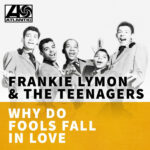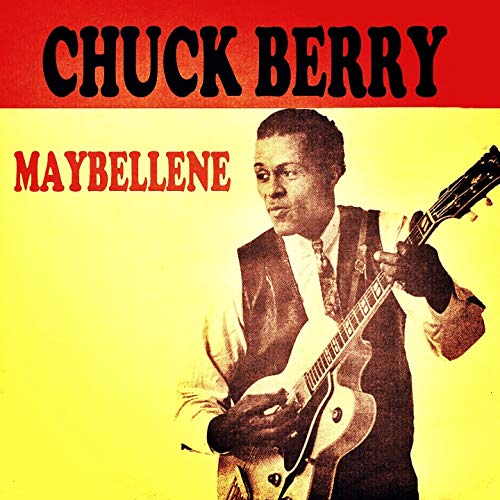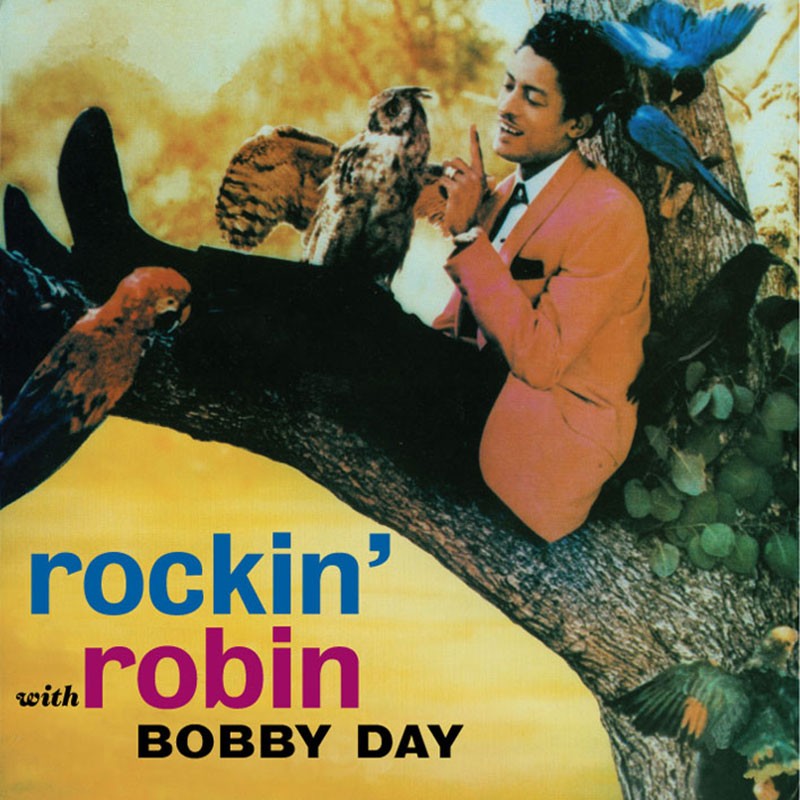 Few songs capture the exuberance, heartbreak, and dizzying confusion of young love quite like Frankie Lymon and the Teenagers’ 1956 hit “Why Do Fools Fall in Love.” From the moment Lymon’s high, sweet, and unmistakably youthful voice opens the track, listeners are transported to a world of teenage infatuation, longing, and unfiltered emotional intensity. The song’s infectious energy, irresistible rhythm, and lyrical vulnerability established it as one of the defining tracks of the early rock and roll era, and decades later, it remains an iconic anthem of youthful love and musical innovation.
Few songs capture the exuberance, heartbreak, and dizzying confusion of young love quite like Frankie Lymon and the Teenagers’ 1956 hit “Why Do Fools Fall in Love.” From the moment Lymon’s high, sweet, and unmistakably youthful voice opens the track, listeners are transported to a world of teenage infatuation, longing, and unfiltered emotional intensity. The song’s infectious energy, irresistible rhythm, and lyrical vulnerability established it as one of the defining tracks of the early rock and roll era, and decades later, it remains an iconic anthem of youthful love and musical innovation.
“Why Do Fools Fall in Love” is immediately captivating because of the sheer presence of Frankie Lymon’s voice. At just thirteen years old, Lymon possessed a vocal maturity that belied his age, combining the innocence of adolescence with a natural understanding of phrasing, timing, and emotional nuance. His lead vocal rides effortlessly over the driving rhythm section, swinging between playful exuberance and heartfelt questioning. The opening line, with its impish and almost pleading tone, immediately signals the song’s thematic core: the bewilderment of young love. Lymon’s voice is light yet commanding, carrying the song forward while inviting listeners to share in the vulnerability and exhilaration of teenage romance.
The Teenagers, Lymon’s backing group, play a crucial role in establishing the song’s musical identity. Their tight harmonies provide both contrast and reinforcement, punctuating Lymon’s lead lines with doo-wop stylings that were innovative for the time. The group’s vocal arrangements are deceptively sophisticated, layering backgrounds in ways that enhance the sense of urgency and emotional resonance in the lyrics. The call-and-response interplay between Lymon and the Teenagers not only emphasizes the song’s narrative of questioning and confusion but also showcases the collaborative dynamism that made this group stand out in the mid-1950s. Their harmonies are playful, exuberant, and perfectly pitched, creating a texture that is simultaneously lush and buoyant, contributing to the song’s enduring appeal.
Musically, “Why Do Fools Fall in Love” is a masterclass in the early rock and roll and doo-wop hybrid. The rhythm section drives the song with a shuffle beat that is lively yet relaxed, evoking the feeling of a teenage dance or a night out at a soda shop. Guitar and piano interplay subtly in the background, emphasizing chord changes and rhythmic accents while never overshadowing the vocal performance. The bassline, though simple, provides a steady foundation, grounding the song’s harmonic structure and giving the harmonies room to shine. Each instrumental element is carefully balanced, creating a cohesive sonic palette that is both sophisticated and accessible—a key reason the song resonated with audiences across racial and cultural lines during its original release.
Lyrically, the song is deceptively simple, but its emotional impact is profound. The refrain, “Why do fools fall in love? / Why do birds sing so gay?” captures the universal experience of confusion and longing that accompanies romantic attachment, particularly in adolescence. These questions are rhetorical yet deeply resonant, expressing both vulnerability and wonder. The juxtaposition of human foolishness with natural phenomena, like birds singing, gives the lyrics a poetic quality that elevates the song beyond mere teenage sentimentality. There is an innocence and earnestness in Lymon’s delivery that allows the listener to empathize with the narrator’s bewilderment, making the song timeless in its portrayal of human emotion.
“Why Do Fools Fall in Love” also represents a crucial moment in the evolution of popular music. Released during the height of the doo-wop era, it exemplifies how African American vocal groups were redefining the musical landscape in the United States. The song’s success on the pop charts signaled a growing acceptance of rhythm and blues elements in mainstream music, paving the way for rock and roll’s explosive popularity in the late 1950s and early 1960s. Frankie Lymon and the Teenagers, with their polished harmonies and youthful exuberance, played an instrumental role in bringing the energy and spirit of African American musical traditions to broader audiences, influencing countless artists who would follow in their wake.
The song’s structure is simple yet effective, adhering to a verse-chorus form that emphasizes the central hook while allowing Lymon and the Teenagers to demonstrate their vocal prowess. Verses build narrative tension, with the lead vocal narrating the perplexity of romantic entanglement, while the chorus releases that tension with a catchy, memorable refrain that encourages sing-along participation. The song’s brevity—just over two minutes—contributes to its impact, leaving listeners with a sense of completion and satisfaction while ensuring that every musical and lyrical moment is concentrated and potent.
One of the most remarkable aspects of “Why Do Fools Fall in Love” is its combination of joy and pathos. The upbeat, danceable rhythm and exuberant harmonies give the song a buoyant surface energy, yet beneath that lies a sense of questioning and vulnerability that resonates deeply. Lymon’s performance captures the essence of adolescent uncertainty, making the track relatable not just to teenagers of the 1950s, but to anyone who has ever experienced the dizzying highs and lows of first love. The duality of excitement and confusion, expressed through both lyrics and music, is what gives the song its emotional depth and enduring relevance.
The song’s influence on subsequent generations of musicians cannot be overstated. Its combination of infectious melody, sophisticated vocal arrangements, and emotionally resonant lyrics served as a blueprint for countless doo-wop, pop, and rock artists in the decades that followed. Many of the biggest names in soul, pop, and rock have cited Frankie Lymon and the Teenagers as formative influences, and “Why Do Fools Fall in Love” remains one of their most frequently referenced and covered works. From covers by artists like Diana Ross to reinterpretations in contemporary pop and R&B, the song has proven its versatility and adaptability, standing as a testament to the timelessness of its core elements.
Beyond its musicality, the song also carries cultural significance. It captures a moment in American history when teenage identity, consumer culture, and the music industry were beginning to intersect in powerful ways. The song became an anthem for youth, encapsulating the emotions, aspirations, and anxieties of a generation coming of age in a rapidly changing society. It was played at dances, on jukeboxes, and on radio stations, creating a shared cultural experience that helped solidify the social importance of pop music as a vehicle for adolescent expression.
Production-wise, “Why Do Fools Fall in Love” benefits from the clarity and precision of 1950s studio techniques. While recording technology was relatively limited compared to modern standards, the arrangement and mic placement ensured that the vocals and harmonies were prominent, with instruments providing support without overpowering the lead. The result is a clean, crisp sound that highlights the unique timbre of Lymon’s voice and the tightness of the Teenagers’ harmonies. The production choices also allow the song to feel immediate and intimate, as if the listener is standing in the room with the performers, experiencing their youthful exuberance firsthand.
The song’s rhythmic qualities contribute significantly to its enduring appeal. Its swing feel, syncopated accents, and forward momentum create an irresistible drive that invites dancing, clapping, and audience participation. This rhythmic vitality, combined with the melodic charm and lyrical vulnerability, makes the track a multi-dimensional experience that engages listeners on several levels. It is both fun and emotionally resonant, a balance that is difficult to achieve but executed perfectly by Frankie Lymon and the Teenagers.
“Why Do Fools Fall in Love” also highlights the universality of musical storytelling. Despite being deeply rooted in the specific context of 1950s American teenage life, the song’s themes of romantic confusion, desire, and heartbreak are timeless. Listeners from any generation can relate to the feelings expressed in the lyrics, and the combination of vocal expression, harmonic richness, and rhythmic energy ensures that the song continues to connect with audiences long after its initial release. Its narrative simplicity—questions about love and attraction—makes it accessible, while the sophisticated execution elevates it into a work of art that resonates on multiple levels.
Live renditions of the song further underscore its appeal. Even in modern performances, whether by tribute acts or surviving members of the original Teenagers, the song’s infectious energy translates directly to the stage. The chorus encourages crowd participation, and the playful call-and-response sections allow performers to interact with their audience, creating a shared experience that mirrors the communal dances and social gatherings of the 1950s. This performative adaptability has helped maintain the song’s visibility and popularity across decades, ensuring that new generations encounter and appreciate it.
The song’s melodic construction is deceptively simple yet ingeniously effective. The lead line is easy to follow and sing along to, creating an immediate connection with listeners. Harmonies reinforce the melody, adding color and depth without complicating the structure. This clarity of melody and harmony allows the song to linger in the listener’s mind, contributing to its status as a classic. Its memorability is one of its strongest assets, ensuring that it remains a staple of oldies radio, nostalgic playlists, and retrospective collections.
Culturally, the song also symbolizes the emergence of the teenage voice in popular music. Frankie Lymon and the Teenagers were among the first to place adolescent experiences and emotions at the center of their musical narrative. “Why Do Fools Fall in Love” captures the unique combination of naivety, passion, and intensity that defines teenage life, and by presenting it so compellingly, the band legitimized teenage concerns and perspectives in a way that had previously been largely ignored by mainstream media. This cultural impact complements the song’s musical achievements, reinforcing its significance in the broader context of popular music history.
The song’s brevity and conciseness contribute to its effectiveness. Clocking in at just under three minutes, every second is filled with purpose. There is no wasted space, no superfluous instrumental passages; instead, the arrangement focuses on storytelling, melodic hook, and rhythmic drive. This economy of structure enhances the song’s impact, making it feel immediate, urgent, and emotionally resonant. Listeners are drawn in, engaged, and satisfied, all within a tightly controlled musical timeframe—a testament to the craftsmanship of the songwriters and performers.
In summary, “Why Do Fools Fall in Love” by Frankie Lymon and the Teenagers is a timeless pop classic that masterfully blends youthful exuberance, emotional vulnerability, and musical sophistication. Its infectious rhythm, memorable melody, and clever lyrics make it a standout example of early rock and roll and doo-wop. The combination of Lymon’s extraordinary vocal talent, the Teenagers’ impeccable harmonies, and the song’s expertly crafted arrangement ensures that it remains both a cultural touchstone and a musical achievement. Its influence on subsequent generations of musicians, its enduring appeal across decades, and its resonance with listeners of all ages secure its place as one of the most iconic and beloved songs in popular music history.
Track Highlights:
-
Frankie Lymon’s remarkable youthful yet mature vocal performance
-
Tight, playful, and sophisticated doo-wop harmonies by the Teenagers
-
Infectious shuffle rhythm and driving instrumentation
-
Lyrical exploration of adolescent love, confusion, and longing
-
Cultural significance as a defining teenage anthem of the 1950s
“Why Do Fools Fall in Love” remains an enduring testament to the power of pop music to capture universal human experiences. It is at once joyful, poignant, and irresistibly catchy—a perfect encapsulation of teenage heartache and exuberance, delivered with the talent, charm, and artistry that only Frankie Lymon and the Teenagers could provide. Its timeless appeal continues to inspire listeners, reminding us why this song remains a jewel in the crown of early rock and roll and a definitive anthem of youthful love and longing.


